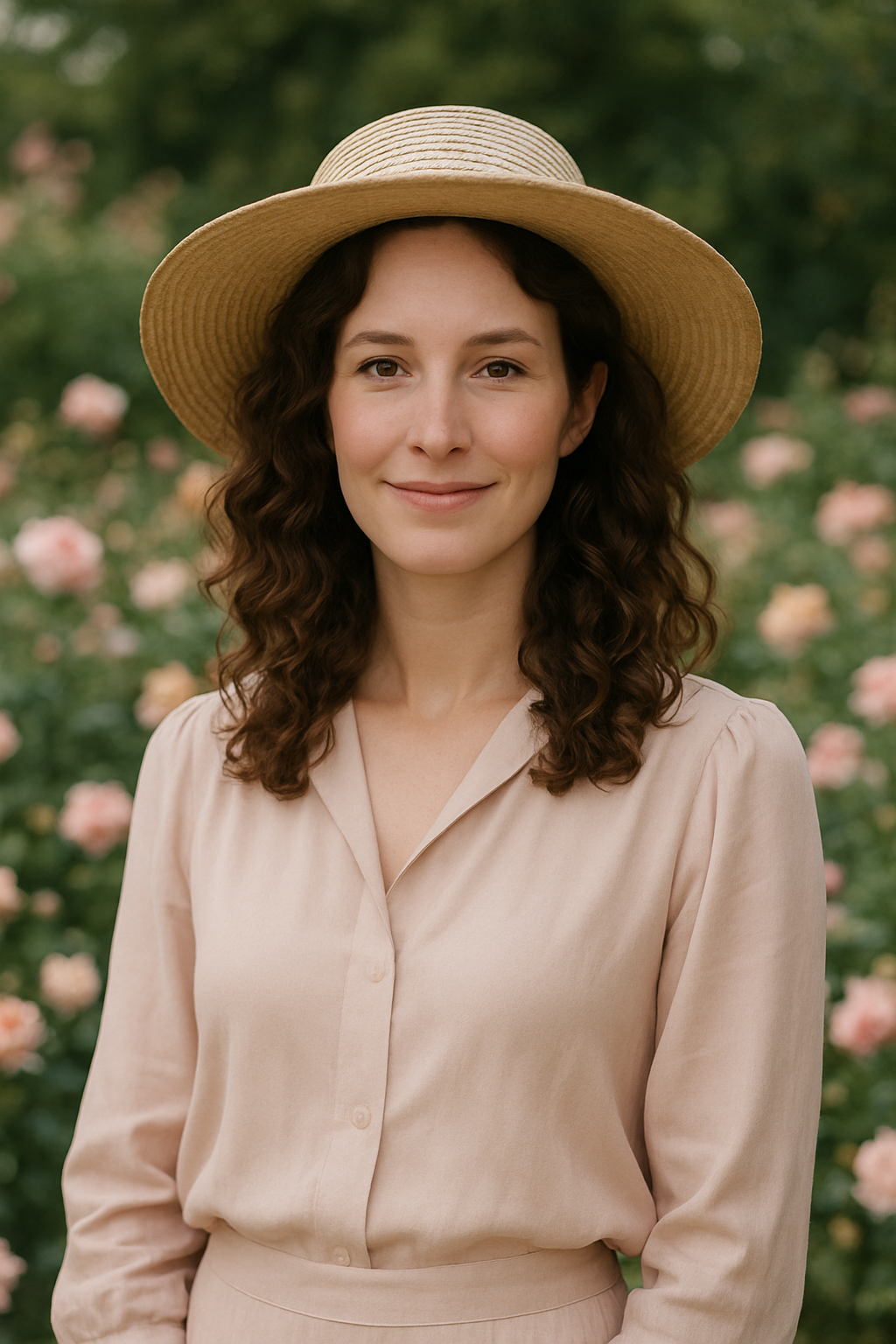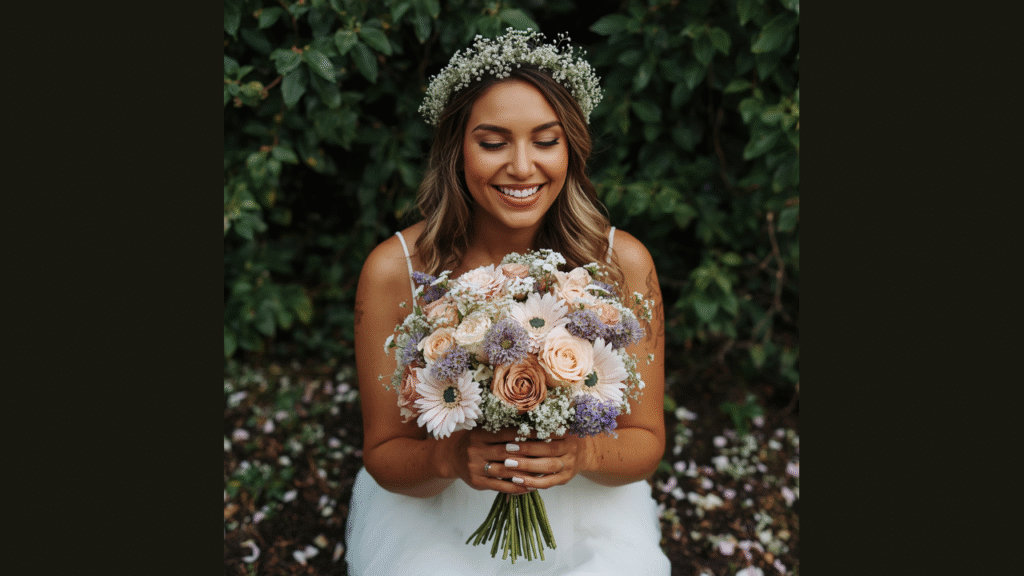
There’s something truly special about walking through your garden on a calm morning, knowing that the flowers you carefully nurtured will soon be part of one of the most memorable days of your life. I’ve spent years growing cut flowers in my backyard, and nothing beats the joy of creating wedding bouquets straight from those blooms. If you’re dreaming of personalized, fresh, and meaningful wedding flowers without the florist price tag, you’re in the right place.
Together, we’ll explore how you can grow, harvest, and arrange stunning DIY wedding flowers from your garden — even if you’re a beginner. Trust me, with a little planning and care, your garden can be a magical source of blooms that make your wedding day unforgettable.
Choosing the Right Flowers for Your Wedding Bouquet
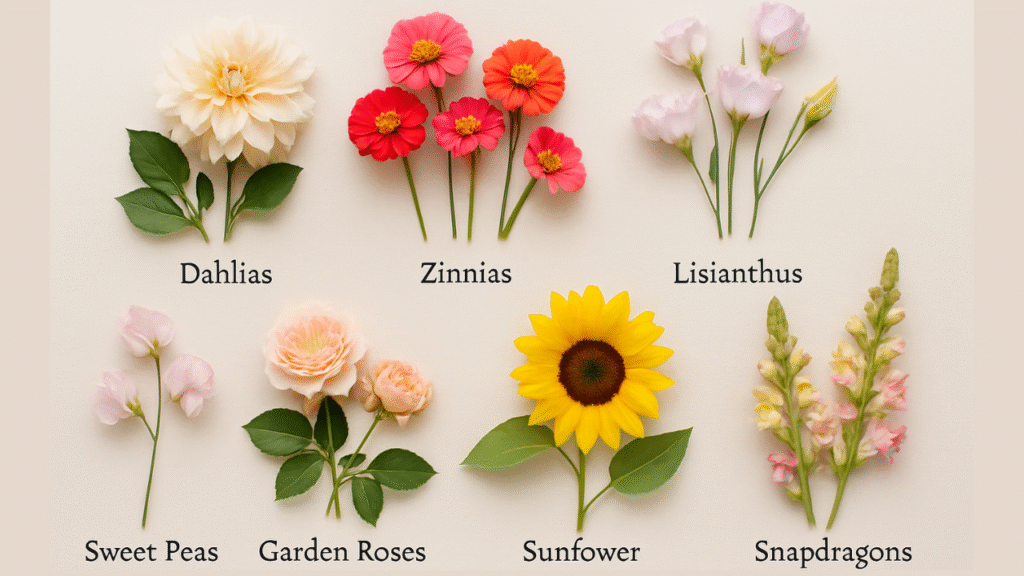
The first step in crafting your own wedding flowers is knowing which blooms will thrive in your garden and shine on your big day. Some flowers handle cutting better, last longer in bouquets, and offer the colors and textures wedding arrangements demand.
Top Garden Flowers Perfect for Weddings
Here’s a simple guide to some of the best garden flowers to grow for wedding arrangements, including their bloom times and care needs:
| Flower | Bloom Time | Sunlight Needs | Vase Life (Cut) | Notes |
|---|---|---|---|---|
| Dahlias | Mid Summer – Fall | Full sun | 5-7 days | Wide color range, bold shapes |
| Zinnias | Summer – Early Fall | Full sun | 5-7 days | Bright, cheerful, easy to grow |
| Sweet Peas | Spring – Early Summer | Partial shade | 4-6 days | Fragrant, delicate colors |
| Garden Roses | Summer | Full sun | 5-7 days | Classic wedding favorite |
| Lisianthus | Summer | Full sun | 7-10 days | Soft petals, elegant look |
| Sunflowers | Late Summer | Full sun | 5-7 days | Adds rustic charm |
| Snapdragons | Spring – Early Summer | Full sun | 7 days | Tall spikes, lovely texture |
How to Select Flowers That Match Your Wedding Theme and Season
Choosing flowers that complement your wedding’s color palette and season helps keep your arrangements cohesive and fresh. For example, spring weddings can benefit from pastel sweet peas and lisianthus, while summer and fall celebrations glow with dahlias and sunflowers.
Tips for Mixing Flower Types and Foliage
Wedding bouquets aren’t just about flowers. Incorporate greenery like eucalyptus or ferns for texture and volume. Mixing bold blooms with soft fillers creates balance and depth — plus, many foliages are easy to grow and last long.
Planning Your Garden for Wedding Flowers
Growing beautiful wedding flowers starts months before the big day. Here’s how to plan your garden effectively.
When to Plant for Bloom Time to Align With Your Wedding Date
Timing is everything. Start by noting your wedding date, then work backward to find the planting window for your chosen flowers. For example, dahlias planted in early spring bloom in mid to late summer. If your wedding is in September, early March is a good time to start tubers indoors or plant seedlings.
Soil and Sunlight Requirements
Most wedding flowers prefer well-drained soil with plenty of organic matter. Full sun (6+ hours daily) is ideal for dahlias, zinnias, and sunflowers. Sweet peas do better with some afternoon shade, especially in hotter climates. Knowing these requirements helps your plants thrive.
Sustainable Gardening Practices
Using compost, rainwater, and natural pest control methods helps your garden stay healthy and eco-friendly. Avoid harsh chemicals so your flowers remain safe and vibrant for cutting. Companion planting with herbs or marigolds can reduce pests naturally.
Caring for Your Wedding Flowers in the Garden
Consistent care will ensure your blooms develop strong stems and vivid colors.
Watering and Feeding
Deep watering once or twice a week encourages roots to grow strong, which supports heavy blooms. Use a balanced fertilizer every few weeks to feed your plants, especially during active growing and flowering phases.
Pest and Disease Management
Regularly inspect your plants for aphids, powdery mildew, or fungal spots. Natural remedies like neem oil sprays or insecticidal soap work well without harmful residues.
Supporting Tall or Delicate Flowers
Some flowers like dahlias need staking or cages to prevent bending or breaking. This support keeps stems straight and bouquet-worthy when it’s time to cut.
Harvesting and Preparing Flowers for Your Wedding
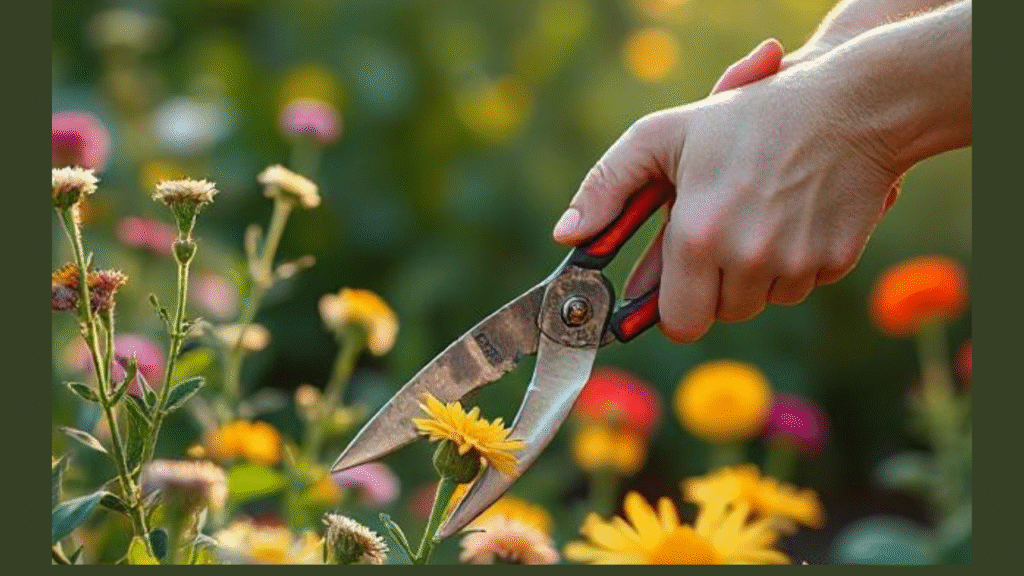
Cutting and preparing flowers properly makes all the difference in how long they last and how they look.
Best Time and Stage to Cut
Cut flowers early in the morning when temperatures are coolest. Harvest when blooms are just starting to open — this gives you flowers that will last longer in your arrangements.
Conditioning Your Flowers
Immediately after cutting, place stems in lukewarm water. Trim the bottom inch of each stem at an angle under water to prevent air bubbles. Remove excess leaves that will sit below the waterline to avoid bacteria growth.
Transporting Flowers
Keep your flowers cool and hydrated during transport to your venue. Use buckets of water and shade if possible. Avoid leaving flowers in hot cars or direct sunlight.
DIY Wedding Flower Arrangements from Garden Blooms
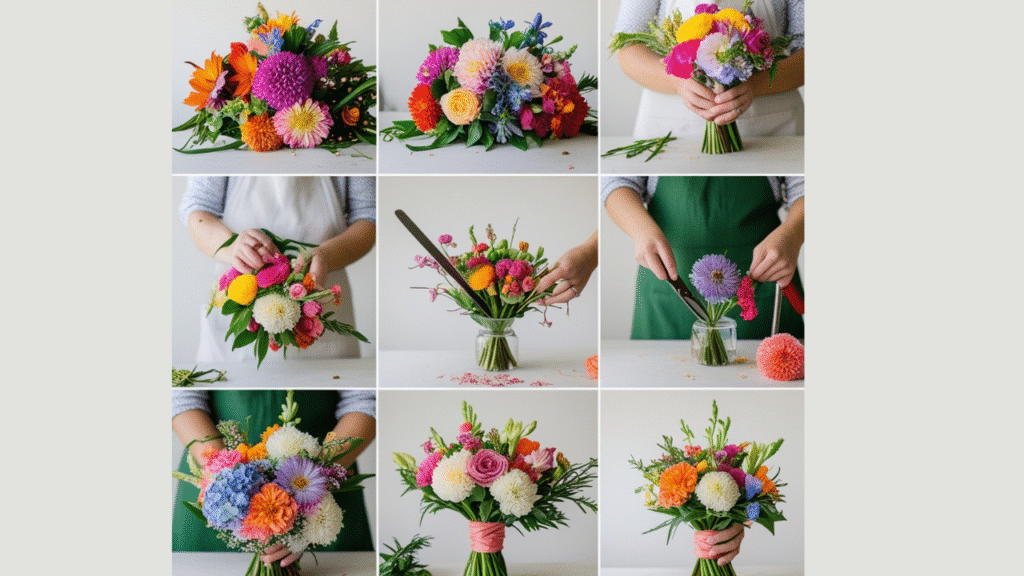
Ready to bring your garden flowers to life? Here’s how.
Basic Tools and Materials Needed
- Sharp floral scissors or garden shears
- Floral tape and wire
- Ribbon or twine for wrapping bouquets
- Floral foam (optional, for centerpieces)
- Buckets and clean water
Step-by-Step Guide to Creating Your Bouquet
- Select a variety of flowers and foliage from your harvest.
- Start with a focal flower, like a dahlia or rose.
- Add filler flowers and greenery around the focal bloom.
- Rotate the bouquet as you add stems for a balanced shape.
- Secure the stems tightly with floral tape or wire.
- Wrap the handle with ribbon or twine for a polished look.
Centerpieces, Corsages, and Boutonnieres
- Use smaller flowers and delicate greenery for corsages and boutonnieres.
- For centerpieces, floral foam helps arrange flowers sturdily in containers.
Creative Ideas
- Use wildflowers or herbs like lavender for scent and texture.
- Incorporate seed pods or berries for seasonal interest.
Budget and Eco-Friendly Tips
Growing your own wedding flowers saves money and reduces environmental impact.
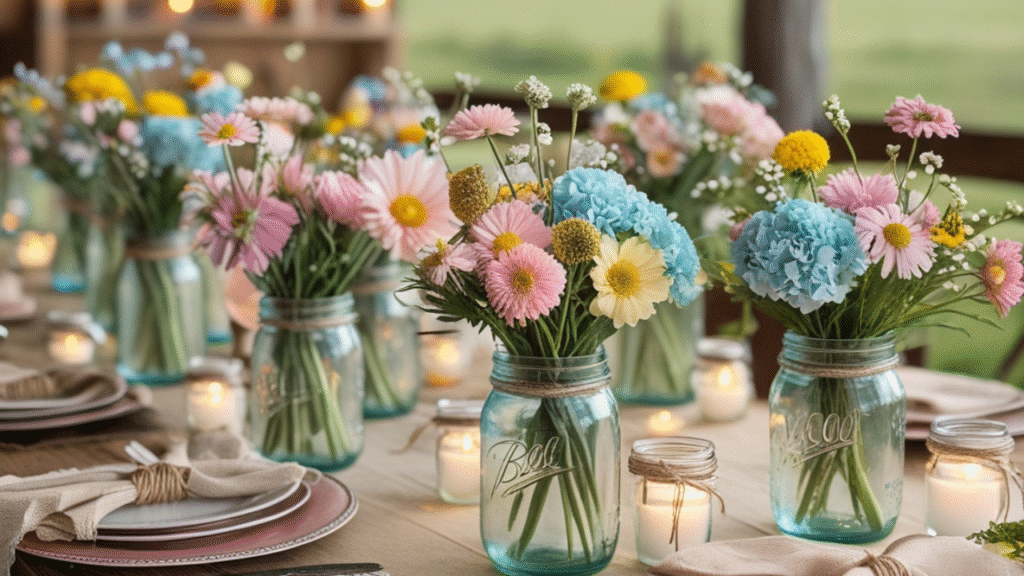
How Growing Your Own Flowers Saves Money
Florist-quality flowers can be costly, especially out of season. By planning ahead and growing at home, you cut out the middleman and shipping costs.
Using Seasonal and Native Flowers
Seasonal blooms grow best and last longest, meaning fewer replacements and less waste. Native flowers also require less water and care, making your wedding greener.
Reusing Flowers
Don’t toss leftover blooms! Repurpose them for post-ceremony decor, toss bouquets, or gifts to guests.
Troubleshooting Common DIY Wedding Flower Issues
Even the best gardeners face challenges. Here’s how to handle them.
Flowers Wilting Before Ceremony
Ensure stems stay hydrated and cool. Misting flowers and keeping them out of direct heat helps.
Color or Size Mismatches
Harvest flowers from multiple plants to get even color and size. If necessary, mix in florist flowers for consistency.
Backup Plans
Have a small emergency bouquet from a local florist just in case. It’s always good to be prepared!
Conclusion
Creating DIY wedding flowers from your garden is a rewarding journey that adds heartfelt beauty to your special day. With thoughtful planning, nurturing, and care, your garden can provide stunning blooms that tell your unique story. Remember, the imperfections and natural charm of garden-grown flowers make your wedding arrangements truly one of a kind. I’m cheering for you every step of the way — your wedding day bouquet will be as beautiful and authentic as the love you’re celebrating.
FAQs
Q1: What are the easiest flowers to grow for wedding bouquets?
A: Zinnias, sunflowers, and dahlias are beginner-friendly and provide vibrant blooms that hold up well in arrangements.
Q2: How far in advance should I plant wedding flowers?
A: It depends on the flower, but most cut flowers like dahlias and zinnias should be planted 8–12 weeks before your wedding date for optimal bloom.
Q3: Can I use garden flowers for corsages and boutonnieres?
A: Absolutely! Smaller blooms and delicate greenery from your garden make beautiful, personalized corsages and boutonnieres.

